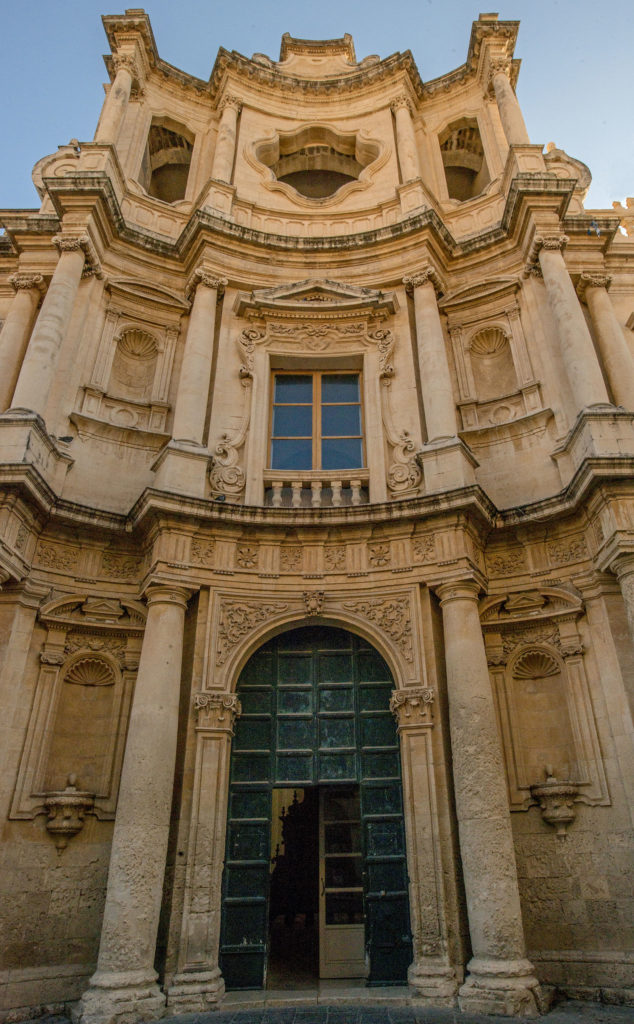The church of San Carlo Borromeo and the adjoining
Jesuit
college represent one of the major religious works of architecture in the city of Noto.
The complex was built very quickly after the earthquake of 1693. Thanks to the work of the Jesuit fathers, in 1699 it was already in an advanced stage of construction.
The rectangular area that houses the seat of the order unfolds with an
orthogonal
plan inserted perfectly into the building fabric along its main axis. As is the case for many buildings resulting from the union of several constructions, the monastery complex also includes a group of at least ten buildings and three courtyards from different periods, from the previous buildings of 1695-1727 to the new constructions of 1730-1757.
The main façade on the Corso, which was begun in 1730, is almost 110 metres long and consists of 22 vertical bays that are symmetrically arranged with respect to the main portal and marked, in the two levels, by
coupled pilasters
.
The façade of the church of San Carlo is one of the most scenic architectural sights in the city.

The work is attributed to
Rosario Gagliardi
though it is not documented with working drawings as his other famous works were.
In 1738 the octagonal dome was built according to a design by Francesco Maria Sortino, and in 1776 the architect
Vincenzo Sinatra
carried out the first restoration work on the church.